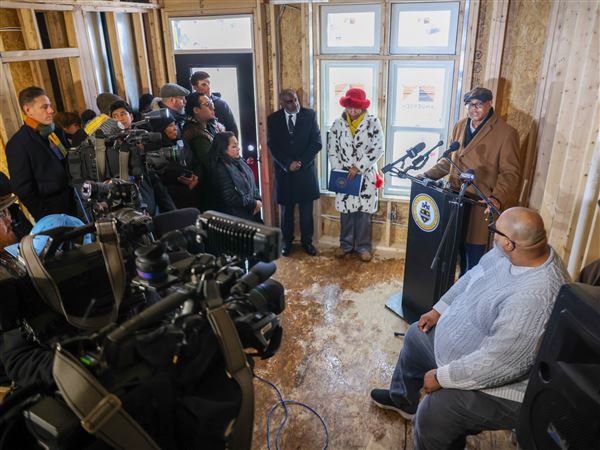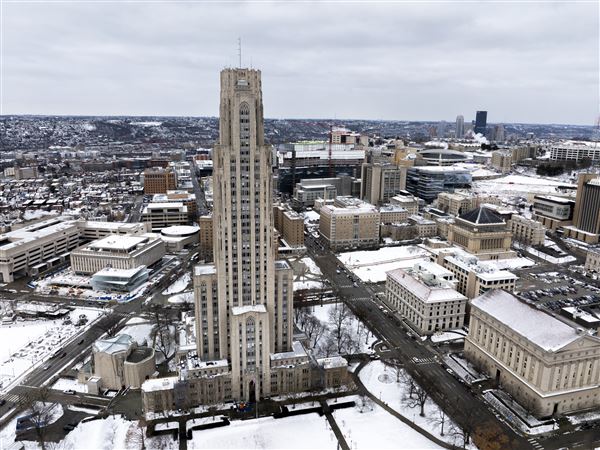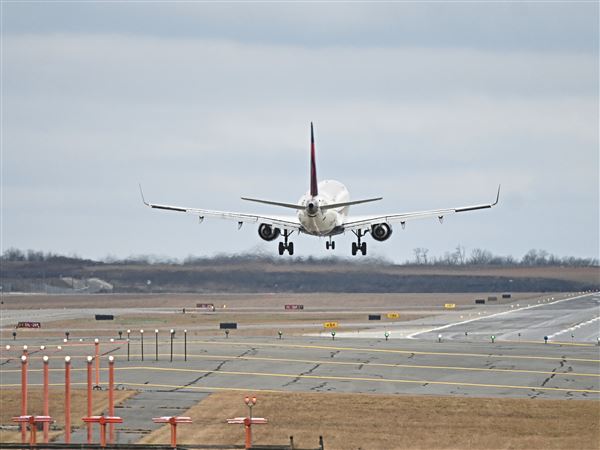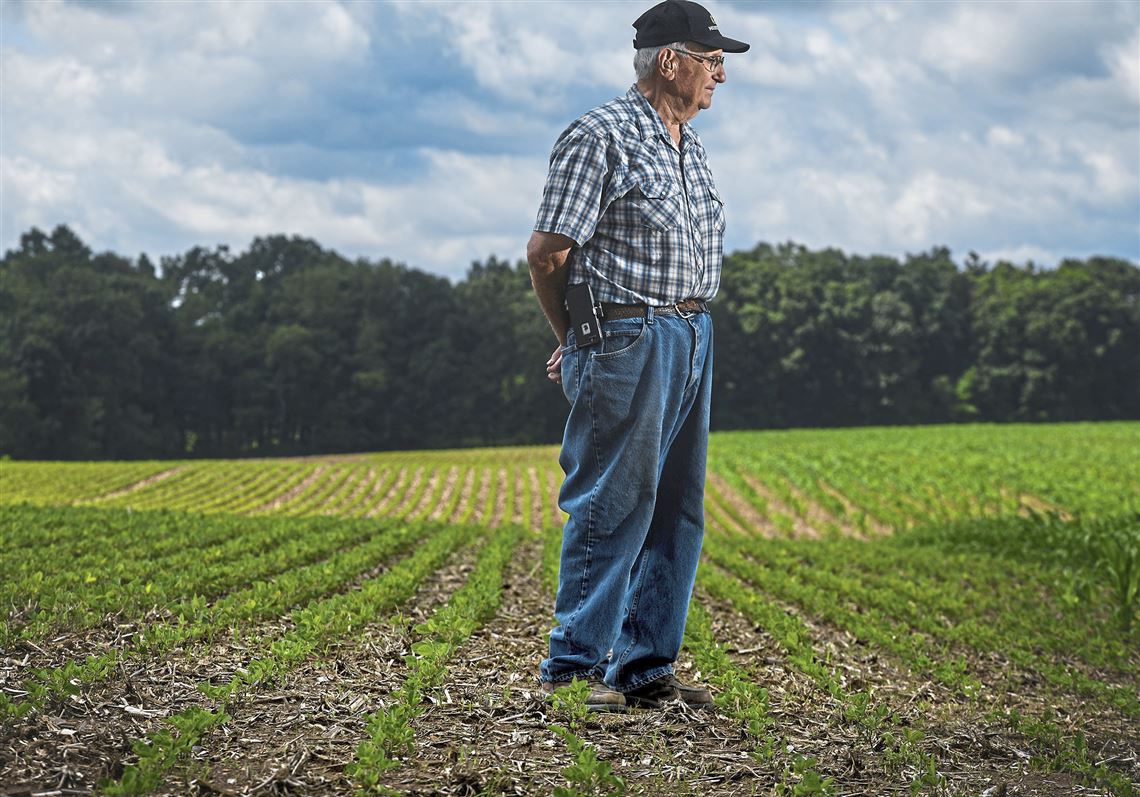Al Vettori checks the Weather Channel forecast on his iPhone everyday to see what the forecast shows for the coming days. He needs three dry days in a row to be able to properly take care of planting and harvesting at his Butler County farm.
Then, fingers crossed, he hopes the forecast for a clear stretch is right.
But this year, a long day of working on the farm has been followed too often by the discovery that the weatherman now was predicting that it will rain the next afternoon, ruining all the work done that day.
“He doesn’t realize what he is doing to me,” the 83-year-old Saxonburg farmer said as he laughed.
Farmers across the mid-Atlantic and Midwest have dealt with a rainy planting season this year, and Mr. Vettori is no exception. The unpredictable weather and an abundance of rain have put him three to four weeks behind on his planting and harvesting of corn, soybeans and hay.
“When and if the weather does cooperate, you have the same amount of work but less days to do it in,” Mr. Vettori said.
By June 2 of this year, 74% of corn crops were planted in Pennsylvania, down from the five-year average of 83%, according to the U.S. Department of Agriculture. Soybeans have also seen a decrease in planting progress with 57% of soybeans in Pennsylvania planted by June 2 as compared with the five-year-average of 65%.
There are more than 125 million acres of farmland in the Midwest, and 75% of that is in corn and soybeans. More than 7 million of these acres are in Pennsylvania.
With rain delaying planting and hurting crop quality, prices for corn are on the rise. On June 10, corn was priced at $4.53 per bushel. which is the highest it has been in five years.
Mr. Vettori, a second-generation Butler County farmer, has lived on his land since 1951 and he has been through a lot of planting seasons.
He said the past few years have been the worst he has experienced. Over time, the planting seasons have become progressively worse. He said the last time he saw a “normal” planting season was five or six years ago.
Based on weather reports from AccuWeather, the Pittsburgh area saw more than 30 days of rain between May 1 and June 28. According to historical data from U.S. Climate Data, there were less than 25 days of rain between May 2014 and June 28, 2014.
This year, the first planting day on Mr. Vettori’s 400 acres of owned and rented land came in early May — only a few days to a week later than normal. Usually he likes to have everything planted and fertilized by June 1.
But when the family-run farm first was able to start putting seeds in the ground this year, it rained shortly after they started. That made the fields too muddy to drive the equipment across. The planting was stretched out through mid-June.
Mr. Vettori’s farm also sells lawn mowers and fertilizer to bring in some revenue, but it likely won’t be enough to make up for the lower crop production.
He said the weather this year will surely affect his income and profits, but he and many farmers will be leaning on their crop insurance.
Crop insurance policies are purchased prior to the planting season and cover loss of crop yields from all types of natural causes, including excessive moisture and price protection, to guard farmers against loss in revenue due to low yields or change in market prices.
The Federal Crop Insurance Corporation is public-private partnership in which 15 private companies are authorized by the U.S. Department of Agriculture Risk Management Agency to write policies. All the services are provided privately, but the agency oversees and regulates the private companies.
The federal government also subsidizes the farmer-paid premiums.
During 2018, nearly 80% of corn and soybean acres planted were covered by a crop insurance revenue protection policy at 70.5 million and 71.2 million acres, respectively, according to the American Farm Bureau Federation.
“Crop insurance policies are one of the most important risk-management tools available to farmers,” the federation said on its website.
Along with the weather, President Donald Trump’s tariff feud with China has hurt soybean trade and given farmers something else to worry about. The government has promised $16 billion in aid.
Most farmers don't want any government support, Mr. Vettori said, noting that they much rather would just get a good price for their crop and be independent.
Mr. Vettori is still optimistic about the potential for turning a profit or at least breaking even, but a lot depends on the weather.
He said that if he tries hard enough, he can get something good out of any crop, but sometimes the crop is too wet to sell. His usual buyer is an agricultural company in East Liverpool, Ohio, which he said takes the crop and ships it to China.
In December, he picked some soybean plants, but they were too wet. So he sold them to a buyer in Indiana, Pa., where the buyers could reduce the moisture in the plants to make them worth using and selling.
It hasn’t been all bad, Mr. Vettori emphasized. Whole swaths of land are OK and he has been able to get crops off to a good start in many areas. But there are many patches where he can’t grow anything or the crops are struggling.
As of June 23, 59% of corn in Pennsylvania was considered in good condition, which is on par with the five-year average, according to the USDA. Fifty-nine percent of soybeans were also considered in good condition, below the five-year average of 64%.
Like the weather, Mr. Vettori said individual plants can be unpredictable. The weather can make the soil too moist and the crops can’t grow in as well, and he won’t see the outcome until much later. Sometimes he’s not sure why one area doesn’t thrive.
“You can see here some of this just won't grow. You plant this crop, [but] you won't know until fall what these soybeans will be like,” Mr. Vettori said.
He likely won’t find out if the wet weather caused any longer-term damage to his fields until next year. He’ll be watching to see if his alfalfa — a perennial flowering plant that is grown as feed for livestock — will survive or if he will have to replant next year.
“Most people couldn't handle the risk of farming. It would be difficult,” Mr. Vettori said. “You could have the most beautiful crop of hay, and you mow it. The weatherman says nice weather for three days, but you know that tomorrow morning, he says it will rain.”
What does he do with all that time he can’t get into the fields?
“You try to make repairs, you try to do things to fill the time. You talk to neighbors and talk about your frustrations,” he said.
Amanda Parrish: aparrish@post-gazette.com or 412-263-3852.
First Published: July 1, 2019, 12:00 p.m.



















